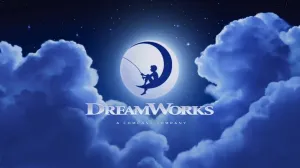In the digital age, technological advancements have allowed mankind to push scientific boundaries further than ever before. Earlier this year, NASA landed another rover on the surface of Mars as it looks for signs of life at the same time Elon Musk and SpaceX are taking people to space via the private sector. It seems that with each passing day, something new about the great unknown is unearthed and relayed to the masses.
Videos by ComicBook.com
Case in point, NASA distributed a press release Friday containing a stunning photo of the Veil Nebula that has previously never seen the light of day. Taking refuge within the constellation of Cygnus, the Veil Nebula was captured by NASA and the ESA’s Hubble Space Telescope. After using five different filters and new “post-processing methods,” the end result is a picture that looks like it was ripped straight from a science-fiction blockbuster.

According to NASA, the Veil Nebula was formed roughly 10,000 years ago from the remnants of a dead star. “That star – which was 20 times the mass of the Sun – lived fast and died young, ending its life in a cataclysmic release of energy,” the release adds. “Despite this stellar violence, the shockwaves and debris from the supernova sculpted the Veil Nebula’s delicate tracery of ionized gas – creating a scene of surprising astronomical beauty.”
The outfit managed to take images of the nebula — which is made up of various ionized gases floating amongst the cosmos — using the Hubble Telescope’s Wide Field Camera 3 and five separate filters. The gases in the nebula include ionized oxygen (blue), ionized nitrogen (red), and ionized hydrogen.
“To create this colorful image, observations were taken by Hubble’s Wide Field Camera 3 instrument using five different filters. The new post-processing methods have further enhanced details of emissions from doubly ionized oxygen (seen here in blues), ionized hydrogen, and ionized nitrogen (seen here in reds),” NASA adds in its release. “The Veil Nebula lies around 2,100 light-years from Earth in the constellation of Cygnus (the Swan), making it a relatively close neighbor in astronomical terms. Only a small portion of the nebula was captured in this image.”








